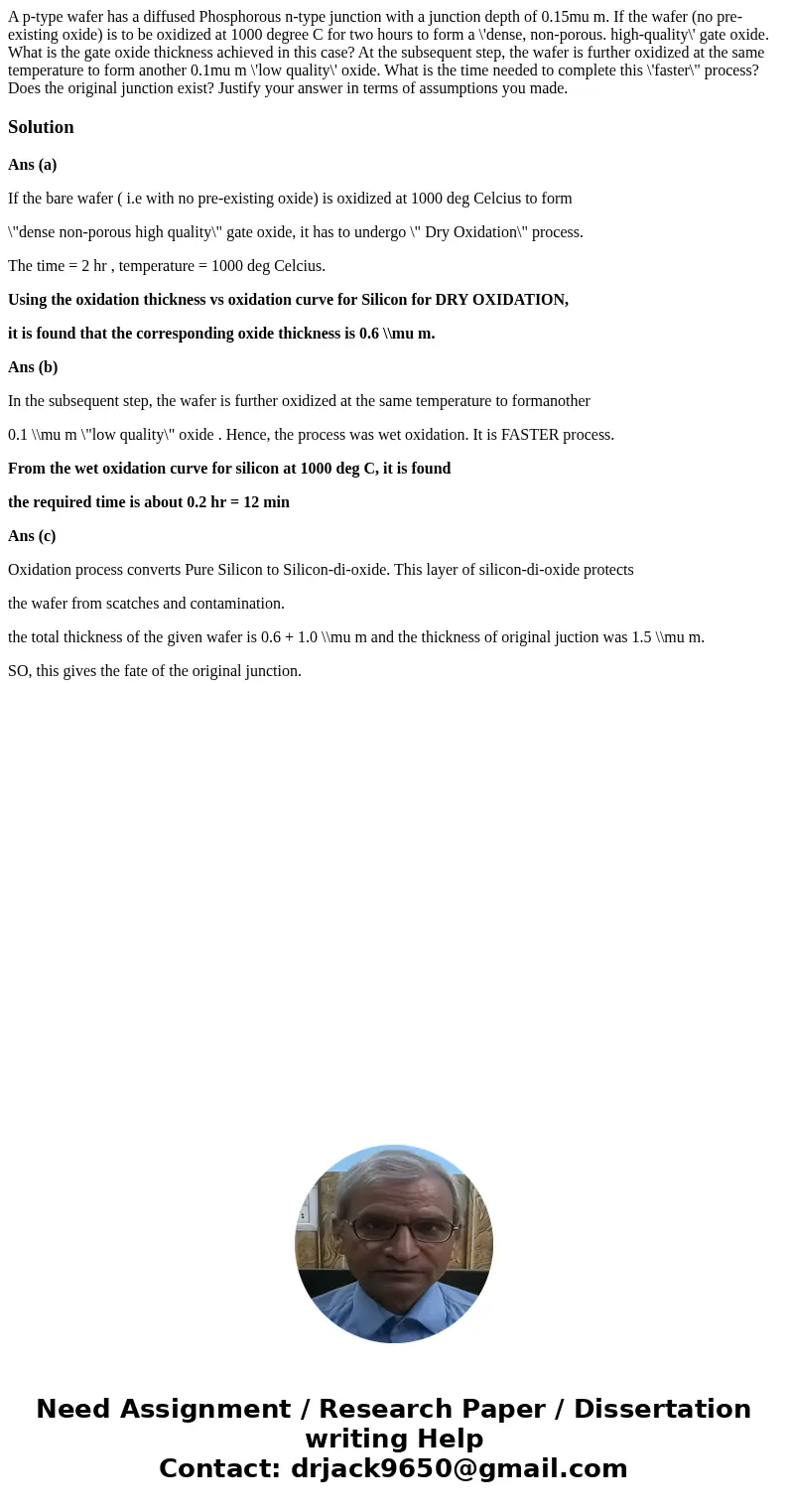A ptype wafer has a diffused Phosphorous ntype junction with
Solution
Ans (a)
If the bare wafer ( i.e with no pre-existing oxide) is oxidized at 1000 deg Celcius to form
\"dense non-porous high quality\" gate oxide, it has to undergo \" Dry Oxidation\" process.
The time = 2 hr , temperature = 1000 deg Celcius.
Using the oxidation thickness vs oxidation curve for Silicon for DRY OXIDATION,
it is found that the corresponding oxide thickness is 0.6 \\mu m.
Ans (b)
In the subsequent step, the wafer is further oxidized at the same temperature to formanother
0.1 \\mu m \"low quality\" oxide . Hence, the process was wet oxidation. It is FASTER process.
From the wet oxidation curve for silicon at 1000 deg C, it is found
the required time is about 0.2 hr = 12 min
Ans (c)
Oxidation process converts Pure Silicon to Silicon-di-oxide. This layer of silicon-di-oxide protects
the wafer from scatches and contamination.
the total thickness of the given wafer is 0.6 + 1.0 \\mu m and the thickness of original juction was 1.5 \\mu m.
SO, this gives the fate of the original junction.

 Homework Sourse
Homework Sourse